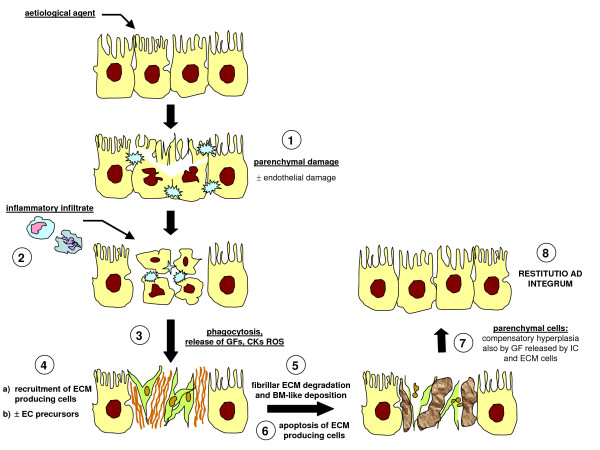Figure 12.
Acute liver injury: when healing is a coordinated and sequential process. A standard acute liver injury leading to irreversible parenchymal damage is followed by recruitment in the injured site of resident (Kupffer cells) or peripheral blood-derived activated monocyte/macrophages, resulting in phagocytosis, and the release of growth factors, cytokines, chemokines and ROS. Healing proceeds with recruitment of ECM-producing cells (HSCs and/or portal fibroblasts) and, likely, also of endothelial progenitor cells (EPCs): recruitment of these cells is essential to provide deposition of new ECM (basal membrane-like) and to form new sinusoids. Next, HSCs in excess will undergo apoptosis and the 'restitutio ad integrum' will require compensatory hyperplasia of hepatocytes that have survived the original injury as a response to a number of growth factors released by either inflammatory cells, endothelial cells or HSCs.

